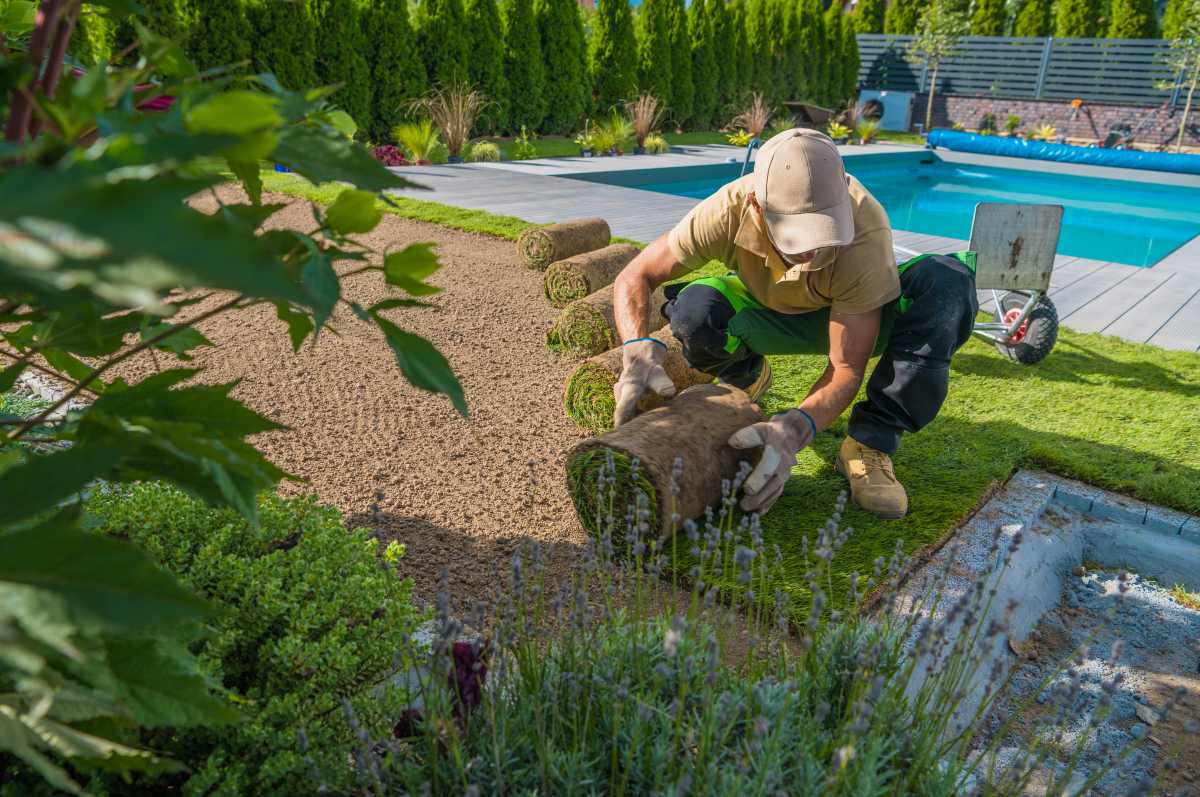
Installing new sod is hard work, but your labor doesn’t end there. Now you must learn how to care for new sod. During the first few weeks, you’ll water, check for root development, mow, and fertilize.
From day 1 to week 4 and beyond, here are the steps for caring for a newly sodded lawn. We’ve also spoken with an expert who will share tips for helping your sod establish and grow healthy.
| Project Difficulty: Intermediate Estimated Time to Complete: 6 to 8 weeks Project Cost: Lawn fertilization costs $0.02 to $0.07 per square foot, while lawn mowing costs around $35 to $100 per visit. |
Day 1: After Laying Sod
Water Your New Sod
On the day you install the sod, water it for 40 minutes to an hour — until the soil is moist at a depth of 4 inches. This prevents the grass from drying out, providing adequate moisture to help the grass roots grow into the soil and promote healthy root development.
Pro Tip: To check that you’ve watered your sod lawn correctly, peel back a corner and touch the ground to see if it’s moist. You can also check a few spots in your lawn with a long screwdriver (moist soil should cling to it).
Note: If you hired a landscaping pro to install your sod, ask them if they can also do this step for you.
See Related: How to Plant Grass Seed
Avoid Foot Traffic
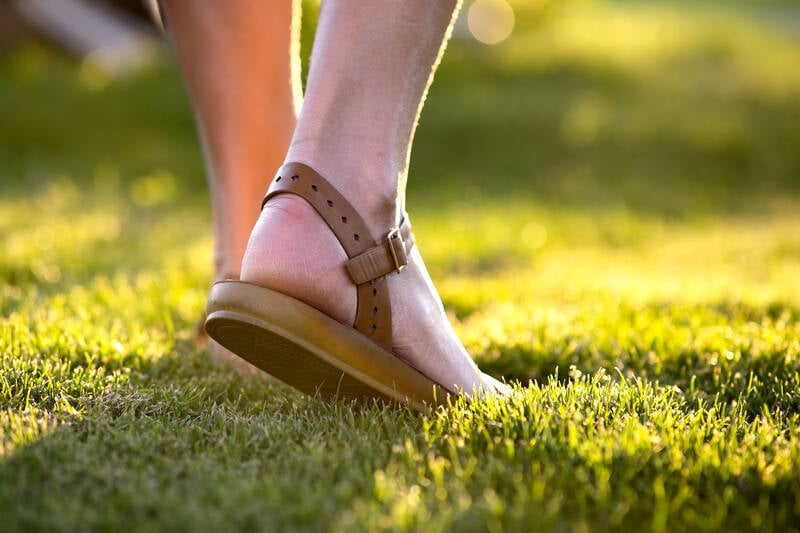
The sod-laying process can be stressful for your turf, as it can’t recover and take root overnight.
So, for the next 14 days, as well as after the first mow, it’s crucial to minimize foot traffic on your new lawn. Doing so can help reduce stress on your turf and prevent soil compaction, which can otherwise hinder root development. Plus, you won’t be disturbing your grass as it starts to grow roots.
After 2 weeks without foot traffic (along with daily watering, which I’ll cover in the next section), your new sod will be strong enough to withstand light walking. But if you want to help your grass grow even more healthy and resilient, avoid disturbing your lawn for a month after installation.
Pro Tip: If you have no choice but to walk on your new sod lawn, avoid doing so when it’s wet. Remember that wet soil is more prone to compaction than dry soil.
See Related:
Days 2-14: Root Development
Watering Schedule
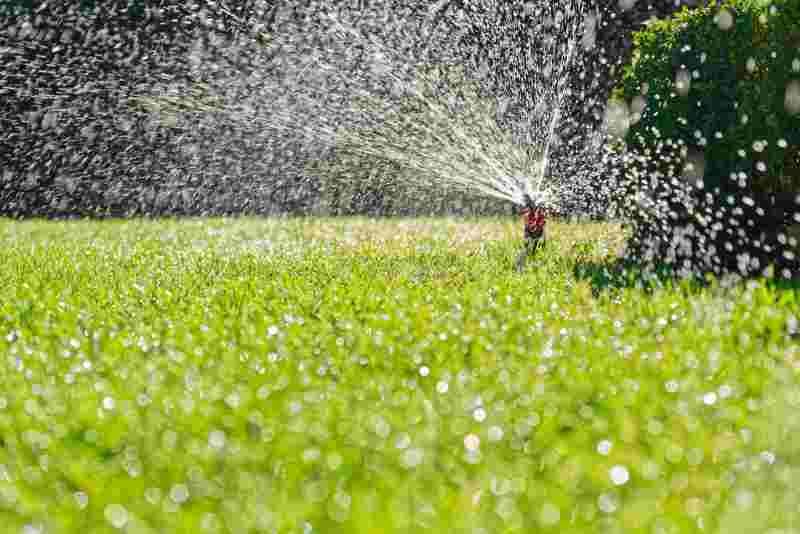
For the next 2 weeks, water your lawn twice a day for about 15 to 20 minutes per watering. Similar to the first day of watering, the soil must be moist 4 to 6 inches deep.
Michael Masucci, public educator at the University of Florida IFAS Extension, says, “Provide light but frequent watering for the first 2 to 3 weeks so the soil stays moist but not overly wet. Once the sod is firmly rooted, you can taper off on watering.”
Don’t miss a day of watering, and remember to account for rainfall and adjust your watering schedule accordingly. The goal is to keep your soil moist, not soggy or squishy.
Combined with low humidity, high temperatures during mid-day and early afternoon can cause water to evaporate quickly. To avoid this, remember to water your new sod in the morning and late afternoon — which is the best time to water your grass.
Pro Tip: Don’t water in the early evening or during the night. While you don’t want water to evaporate rapidly, you also don’t want your lawn to be soaking wet in the evenings. Otherwise, you’ll be creating an ideal environment for fungal growth and disease.
Check Root Development
You can start checking for root development 2 weeks after sod installation or after 7 to 10 days of daily watering. To do this, Masucci advises gently tugging on the grass blades.
He says, “If there’s resistance, roots are establishing. You can also carefully lift a corner of the sod. Look for white, healthy roots growing into the soil beneath. This ensures the sod is adapting to its new environment.”
Between days 10 and 14, you should meet a lot more resistance when attempting to lift the sod. This is proof that it has bonded successfully with the soil and the roots have properly developed. At this point, the grass should also feel fresh and moist to the touch.
Pro Tip: Poor watering can make your sod dry and turn a bluish-gray color. In this case, continue with your daily watering schedule and adjust accordingly.
Weeks 3-4: Establishment
Adjust Watering
At the beginning of week 3 or after 14 days, you should start to gradually reduce your watering frequency.
For this period, your watering schedule should be in the mornings every other day or every 3 days. The amount of water should still be the same. But instead of watering your lawn in short, frequent bursts, you’re watering it in one go.
Let’s say you’ve been watering your new sod twice daily for 15 minutes per cycle (for the past 2 weeks). This time, you can lessen the frequency to every other day, but increase the duration to 1 hour. This deep and less frequent watering helps the root system penetrate deeper into the soil.
See Related:
First Mow
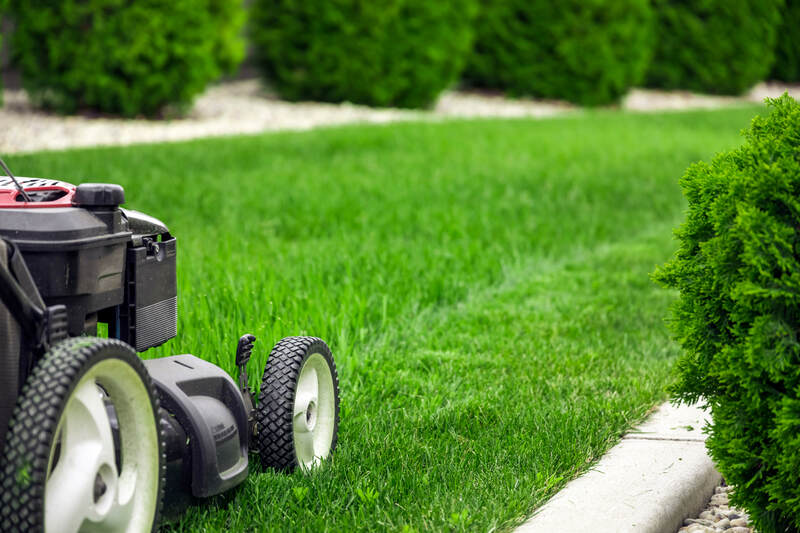
Depending on your grass type, there’s a good chance it will reach its ideal height for first mowing by week 3. So, Masucci suggests waiting 3 to 4 weeks before you mow.
Here’s a quick guide on the recommended height before the first mow for most grass types:
| Type of Grass | Recommended Height Before First Mow | Recommended Mowing Height |
| Bahiagrass | 4 – 5 inches | 3 – 4 inches |
| Bermudagrass | 1.5 – 2.5 inches | 1 – 2 inches |
| Buffalograss | 1.5 – 3 inches | 1 – 2 inches |
| Centipedegrass | 1.5 – 2.5 inches | 1 – 2 inches |
| Fine fescue | 3 – 5 inches | 2.5 – 4 inches |
| Hard fescue | 2 – 3 inches | 1.5 – 2.5 inches |
| Kentucky bluegrass | 2.5 – 4 inches | 2 – 3 inches |
| Perennial ryegrass | 2 – 3 inches | 1.5 – 2.5 inches |
| St. Augustinegrass | 3 – 4 inches | 2.5 – 3 inches |
| Tall fescue | 2 – 4 inches | 1.5 – 3 inches |
| Zoysiagrass | 1 – 1.5 inches | 0.5 – 1 inch |
Before mowing new sod for the first time, do the following prep work:
- Let your grass grow to about one-third taller than its recommended mowing height before mowing your lawn. So, if your grass has a recommended mowing height of 3 inches, wait until it grows to 4 inches before doing the first mow.
- Avoid using a lawn mower with dull blades to ensure a clean cut. You also don’t want to injure your grass or have it pulled out on the first mow. So, sharpen your mower blades before using it on your lawn.
- Cut your grass between 8 a.m. and 10 a.m. or between 4 p.m. and 6 p.m., which are the best times to mow your lawn. Also, don’t mow your lawn between 6 a.m. and 8 a.m., when your grass is still wet with dew.
- Don’t mow wet grass. If you do, the grass clippings will clump together and attract pests and diseases. Also, if the soil is wet, your lawn mower will leave ruts. So, wait until the soil is dry before mowing.
If you mow below the recommended height, you’ll expose the soil to more heat and cause the grass to lose moisture. If this happens, your lawn will be more attractive to pests and more susceptible to diseases, leading to reduced lawn density.
See Related:
Fertilization
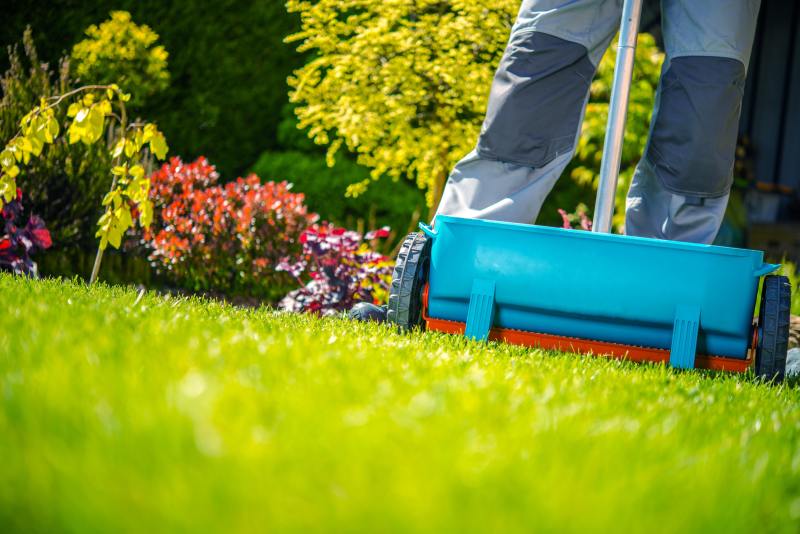
Applying fertilizer too early is a waste of money because the root system has not fully developed yet. And worse, the fertilizer can end up burning the delicate, growing roots.
Masucci recommends waiting 30 to 60 days before fertilizing new sod. After a month or two, the roots will have grown into the ground and start craving nutrients.
Pro Tip: Remember to apply the right starter fertilizer, as recommended in your soil test report. It can give the roots and soil a mix of all the beneficial nutrients to encourage a healthy turf.
See Related:
Things to Consider in Sod Aftercare
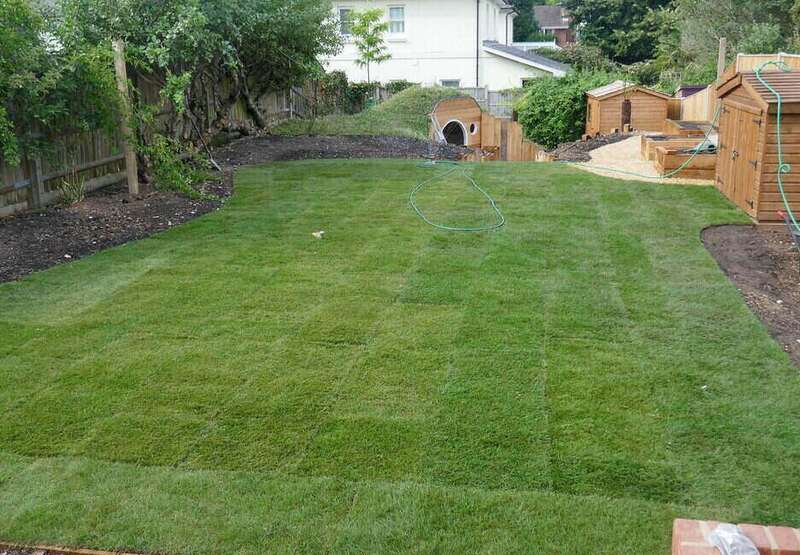
Season and Temperature with Watering
When caring for new sod, consider the current season and temperature. For instance, you may need to water multiple times per day on hot summer days to prevent the soil from drying out. Conversely, you might have to water less when it’s raining. Remember that the goal is to have moist soil at a depth of 6 inches.
Gaps and Seam Separation
Several factors like uneven ground, poor soil preparation, insufficient watering, and not installing sod pieces tightly together can cause gaps and seam separation. According to Masucci, gaps between sod pieces can cause drying out, weed intrusion, and stormwater runoff.
Pro Tip: For small gaps, you can add a thin layer of topsoil to fix the issue. But if there are large gaps, cut pieces of unused sod to fill in the bare spaces.
Brown Spots
Inadequate watering is a common cause of brown spots, but it can also be due to poor soil quality or excessive heat. The most common solution for brown spots is to increase your watering frequency. Also, check your sprinkler’s coverage, ensuring the water is evenly distributed across the lawn.
Long-Term Maintenance
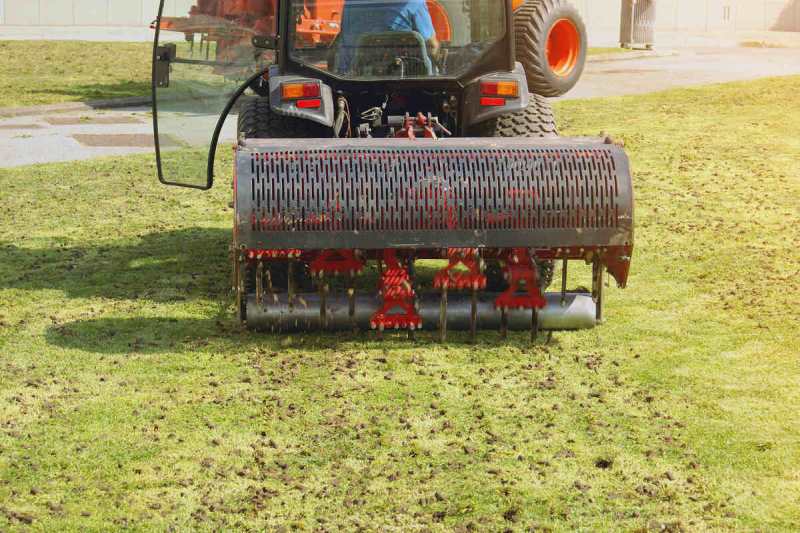
Long-term lawn care usually involves watering, mowing, and fertilizing. Depending on your lawn’s condition, you might also need to aerate and dethatch more often. Plus, you might need to get rid of weeds like crabgrass and pests like grubs.
Most homeowners find lawn care maintenance quite overwhelming. So, if you have a busy schedule, you’ll find that hiring lawn care experts can save you a lot of trouble.
FAQ About Caring for New Sod Lawns
Keep your dog off the lawn for the first month after installing sod.
Poor soil preparation, mowing too soon, overwatering, or underwatering can prevent your sod from taking root.
The average cost to install sod ranges from $0.86 to $1.75 per square foot. Several factors, like yard size and grass type, can affect this cost.
Hire a Pro to Care for Your New Sod
Laying sod is no easy feat when you consider the work involved during and after installation. No need to break your back mowing and fertilizing once it’s established, though. The best solution is to hire a local lawn care pro who can help you take care of your new lawn post-installation.
Sources:
- Michael Masucci, public educator at the University of Florida IFAS Extension. Personal interview.
- “Establishing Lawns from Sod.” By Zac Reicher, professor, and Keenan Amundsen, assistant professor. University of Nebraska-Lincoln.
Main Photo Credit: Tomasz Zajda / Adobe Stock / License